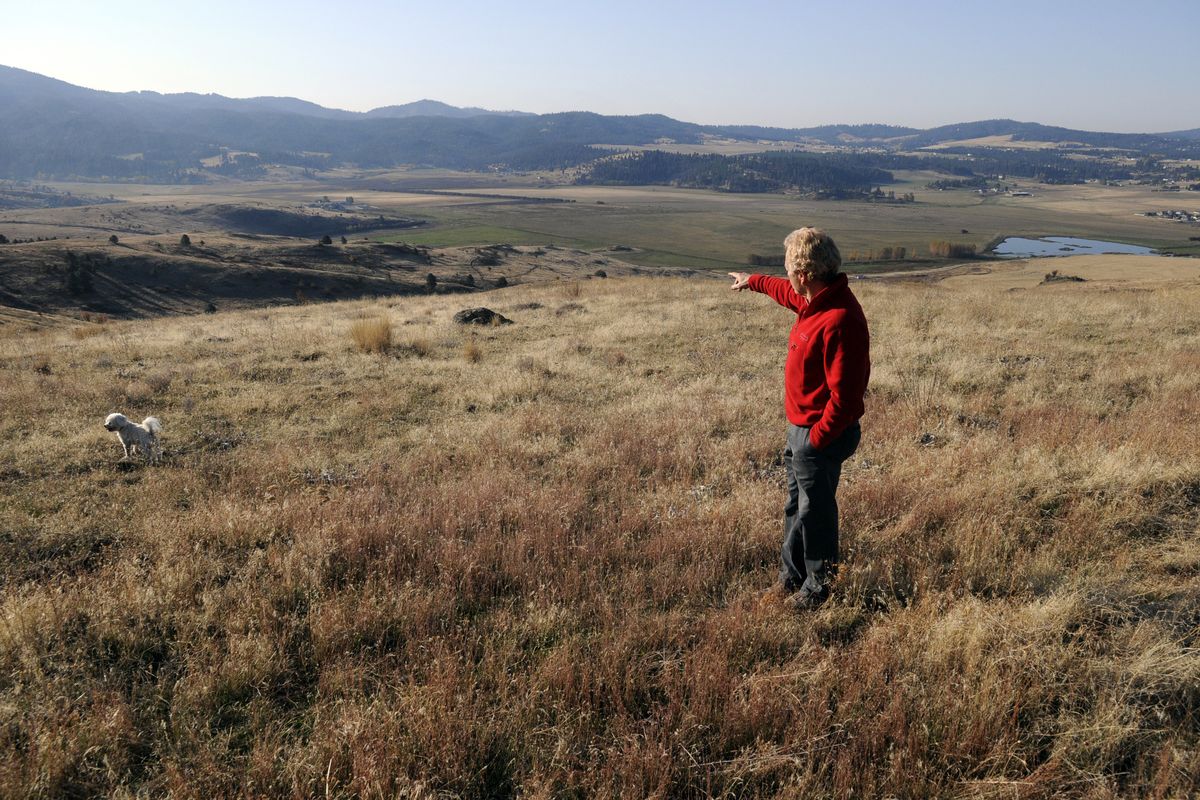Saltese Uplands acquired with Conservation Futures funds

Soon area hikers, mountain bikers and equestrians will have another natural area to explore. Just a mile south of Interstate 90’s Barker Road exit, the recently completed trails at Saltese Uplands curve through shrubby steppe habitat so outdoor enthusiasts can cross creeks, climb through canyons and enjoy a variety of vistas.
Spokane County’s $1.2 million purchase of the 552-acre property from American West Bank is expected to close toward the end of November, said John Bottelli, assistant director of Spokane County Parks. Its purchase is half of a $2.4 million property appraisal in 2010 and is funded by the voter-approved Conservation Futures program.
“It’s a fantastic opportunity for all of us,” Bottelli said. “It’s a little pocket of steppe habitat, a little pocket of desert right here in town. It’s a unique ecosystem to visit. We want the public to be able to get out and enjoy these areas.”
He said the trailhead and parking lot construction on South Henry Road isn’t slated until spring, though the trails will be available once the sale is final.
Included in the sale was about $65,000 for trail development, which was completed in October by Mark Pinch of NAI Black, after seven weeks of work.
“This was a dream for me. I ran over all these hills as a kid,” Pinch said while at the property on a recent sunny morning. He pointed out a soaring raptor with Mica Peak as a breathtaking backdrop. “There’s something magical about this place.”
Pinch said his 12-person crew created about 7 ½ miles of circuitous trails that are designed to minimize erosion while enabling people of all abilities to safely enjoy the natural area, from grassland, springs and creeks to rock outcroppings and numerous vistas.
From the planned parking lot, trail users will start on the perimeter trail, which snakes along the bottom of the property with a gentle rise and fall of only 80 feet through mostly grassland. From that trail users can access several different trails that wind through the steppe habitat or ascend about 600 feet to the top, enjoying many vistas along the way.
“We tried to identify some of the best views,” said Pinch. Standing at the peak of the property, he gestured toward Liberty Lake, nestled between forested hills, a postcard perfect scene. Because Saltese Uplands has few trees, the varied views are mostly unobstructed. Along with Liberty Lake, it looks out Saltese wetlands, Spokane Valley, Mica Peak and Mount Spokane.
“But you don’t see Liberty Lake until you get to the top and you get the pop,” Pinch said.
To enable as many users as possible to access those views and enjoy the area, Pinch said they kept the trails low-grade.
“When we have the trail head, they’ll find it is accessible,” Bottelli said. “The average hiker can make it to the top. You can bring the less active along and get up to the view.”
According to Spokane County parks planner Paul Knowles, the Saltese Uplands property exemplifies what the Conservation Futures program aims to do. “This acquisition is a great example of why people continue to support the Conservation Futures program. Its accessibility, its size, recreational opportunities and wildlife habitat are all things that are tenants of the Conservation Futures program,” Knowles said.
“The property itself is really quite amazing,” he continued. “The trails are easy for almost anyone to access and use and it’s relatively open, so somebody who is curious can cross-country throughout the property and explore some of the ravines and springs and rock features….you really can just explore to your heart’s content.”
Previously owned by Legacy Ridge developer Marshall Chesrown, the land was foreclosed by American West Bank before it was offered to the county for purchase.
“That’s the other neat thing about this property,” Bottelli said. “It was preliminarily platted for 107 lots and an 18-hole golf course. It could have gone the way of private development. But because of the timing it will be here for our kids.”
Bottelli said the Conservation Futures program is taxpayer funded at 1.4 cents per $1,000 in assessed value and brings in about $1.7 million each year, with 85 percent for land acquisition and 15 percent for maintenance and operation. State law allows counties to assess up to 1.6 cents per $1,000 in assessed value, he said. Since the program’s inception in 1994, the county has acquired more than 5,000 acres of natural area.
“For an average $200,000 house you’re paying about $3 into the fund, the cost of a latte,” said Bottelli. “It’s a pretty cool thing to have a dedicated revenue fund to do this, to preserve the last best places while they’re out there and knit together open places that people can use.”